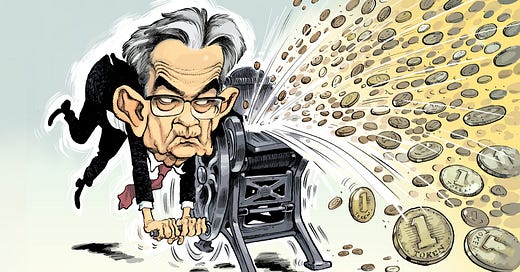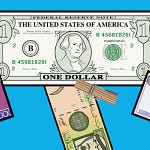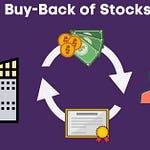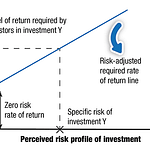Quantitative Easing & Tightening
Though most people have probably heard the terms quantitative easing and tightening, perhaps under the labels QE and QT, there is a lot of confusion on what those terms actually mean. While the prevailing opinion is that QE is synonymous with money printing and QT synonymous with money shredding, that isn’t quite true.
But before I get into that, let me start by explaining the purpose of QE, which can be broken down into two main goals aiming to accomplish the same thing: increased economic activity. The first goal is to drive interest rates down by purchasing government bonds, which is supposed to encourage borrowing by making it cheaper. The second goal is to increase credit and overall spending by flooding big banks with liquidity, as increased liquidity is supposed to boost bank lending.
In both cases, the government wants to boost borrowing and lending to spur economic activity, create jobs, and take the economy out of a recession, depression, or low-growth period. However, none of these goals or intended consequences are guaranteed by QE. In fact, QE has much less of an effect on markets and the economy than most people assume. I’ll explain why that is in just a moment, but let me dive into exactly what QE does first.
QE is when a central bank (like the Federal Reserve) creates bank reserves to buy securities (like Treasuries) from primary dealers (like big banks). Put another way, the central bank prints bank reserves to buy bonds or mortgage-backed securities, which increases the size of its balance sheet. So, when the central bank creates bank reserves, it is adding a liability to its balance sheet that is then held as an asset by the bank that receives those reserves.
However, there are a couple of very important points to raise about this. First, QE will increase the size of the central bank’s balance sheet, but it doesn't increase the size of any private bank’s balance sheet. When a central bank prints reserves through QE, all that is happening from the bank’s perspective is an asset swap. That bank just trades a bond for reserves, so it doesn’t really affect or influence the bank’s finances.
The second point is that bank reserves are not money, they are inert financial assets only entities that have an account with the central bank can use or hold, meaning they can’t be used in the real economy. Regular people, for example, can’t withdraw bank reserves or spend them at their local supermarket, let alone anywhere else. So, I’ll say it again, bank reserves are not money, meaning printing bank reserves through QE does not, on its own, lead to inflation.
Bank reserves are basically accounting tools banks use and exchange among themselves to settle their books. Having more reserves can, in theory, free up more liquidity for a bank to expand its own balance sheet, but that isn’t a guarantee, especially given QE is just an asset swap. QE itself, then, can’t be inflationary unless it encourages banks to lend more or purchase more financial assets, though the latter wouldn’t necessarily lead to CPI inflation being that it’s isolated in asset prices.
This is why the QE in response to the Great Financial Crisis (GFC) didn’t lead to inflation, despite all the financial pundits guaranteeing it would. It’s also why Japan, which has done more than 15 years of QE, has struggled to maintain even 1% inflation over that same period. The excess of bank reserves through QE can ensure banks are well capitalized to engage in lending if they want to, but it doesn’t always lead them to actually increase their lending, which is ultimately what creates real money in the economy and causes increased economic activity and CPI inflation.
That being said, QE can be inflationary if it motivates banks to create more deposits through lending, which is largely what it’s intended to do. The logic, from a central bank’s perspective, is when a bank is flush with reserves, it has enough base money to turn into broad money (like deposits) that would help spur economic growth.
To put it another way, bank reserves act as the liquidity banks need to settle transactions between each other when deposits move around. If they don’t have the liquidity to settle those transactions, it could discourage deposits (creating money through lending), so bank reserves, in theory, can be stimulative.
But, again, the real money printing is credit creation through lending (banks creating new deposits) or deficit spending, but the latter is related to fiscal policy, not QE. So, banks might be more willing to create deposits and lend when they are flush with reserves, but adding bank reserves to the financial system (QE) isn’t sufficient for driving inflation.
Now, let’s talk about quantitative tightening (QT). If QE is expanding the central bank’s balance sheet by creating reserves to buy financial assets like Treasuries from banks, then QT is the opposite: exchanging financial assets like Treasuries to buy back the bank reserves that the central bank then destroys, thereby reducing the size of its balance sheet.
Much like QE isn't inherently inflationary, QT isn’t always deflationary—it all depends on how it influences bank lending. Just because a central bank swaps some assets for bank reserves doesn’t mean the bank on the other side of that transaction will or won’t do anything.
Another important technicality about QT to keep in mind is that it doesn’t always mean the central bank is outright selling the securities on its balance sheet. Because the assets it holds are mostly debt securities with a duration, it will simply let them expire and choose not to reinvest the proceeds from the maturing securities.
As an example, if a Treasury the Fed has on its balance sheet expires, it just doesn’t reinvest or roll over the principal into another Treasury, meaning that money is essentially destroyed, hence the reduction of the balance sheet.
Now, if a central bank wanted to expedite the shrinking of its balance sheet, it could outright sell securities. However, that is normally not the path taken, as it puts a lot of selling pressure on the bond market, so you can usually expect balance sheet reductions at the sovereign level to occur relatively slowly as maturing securities periodically run off the balance sheet.














Share this post